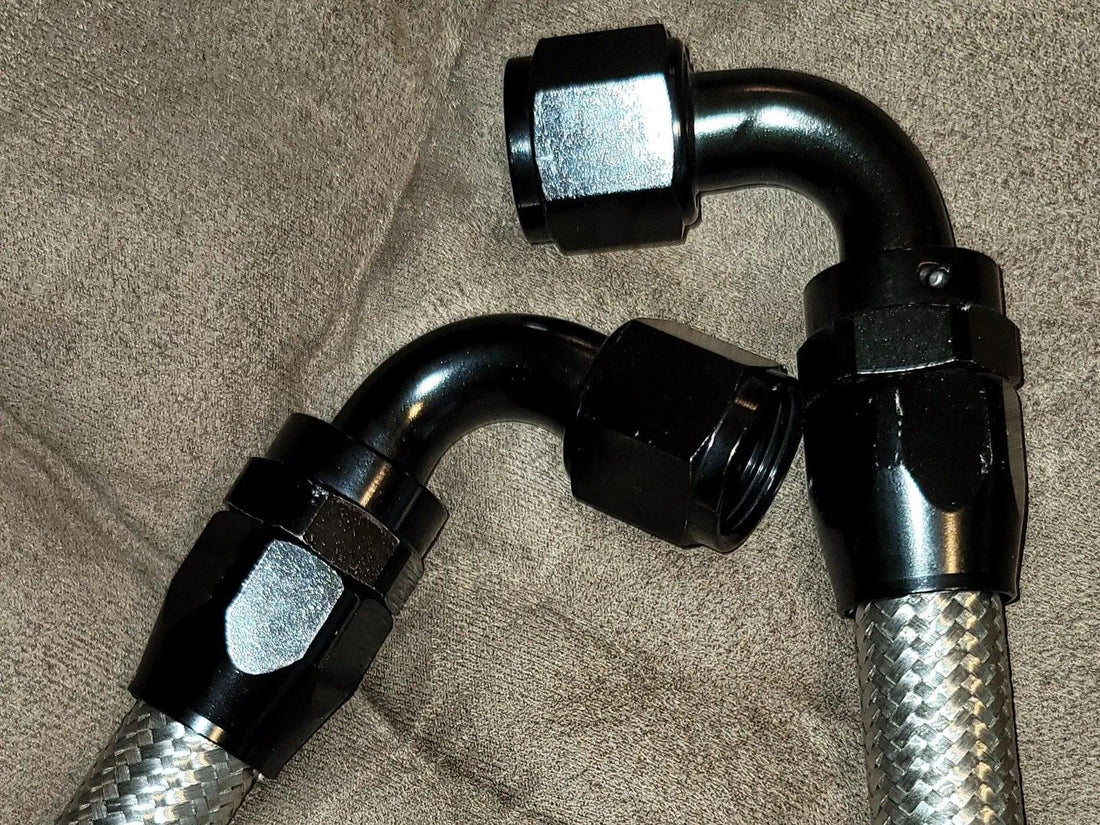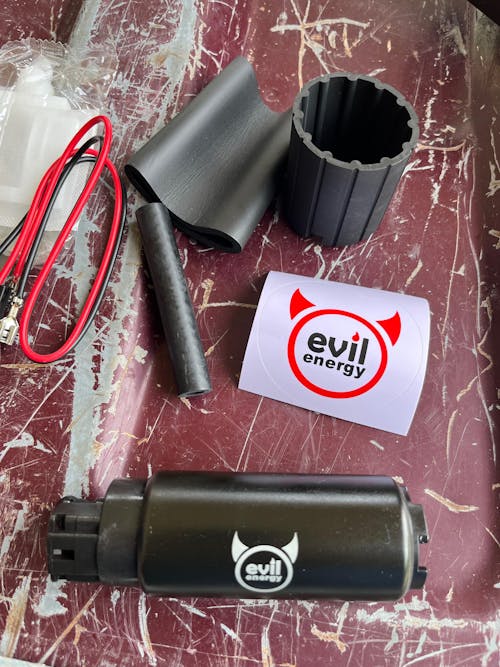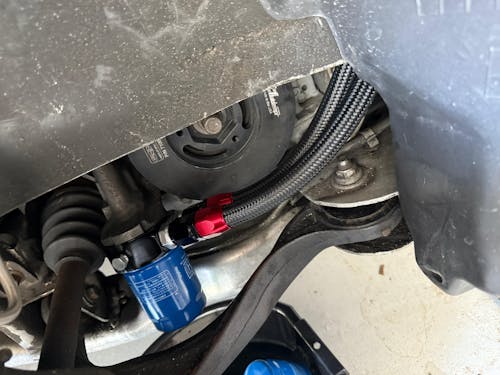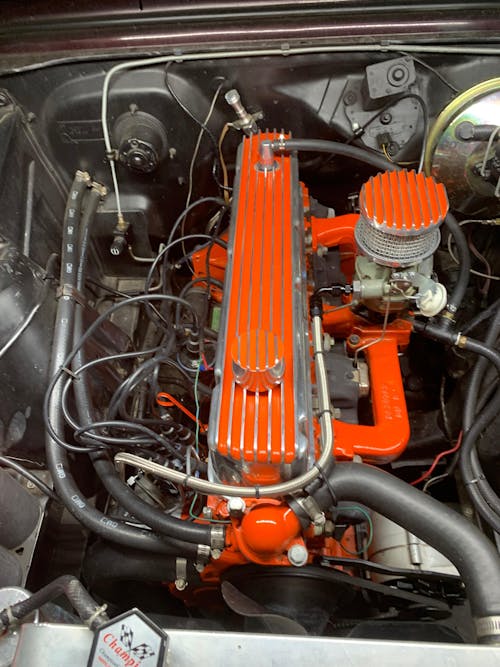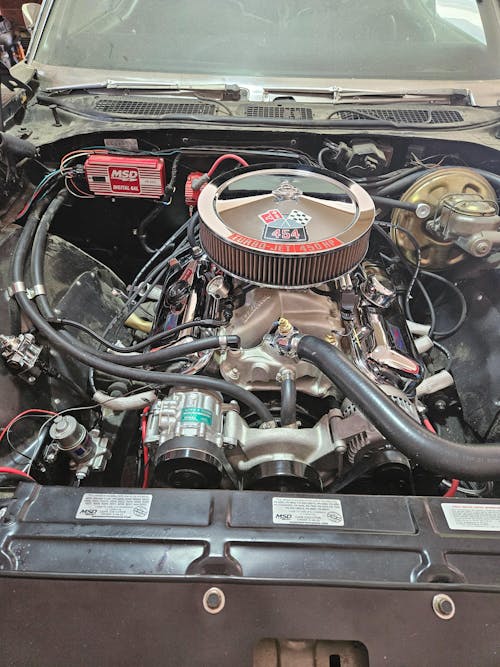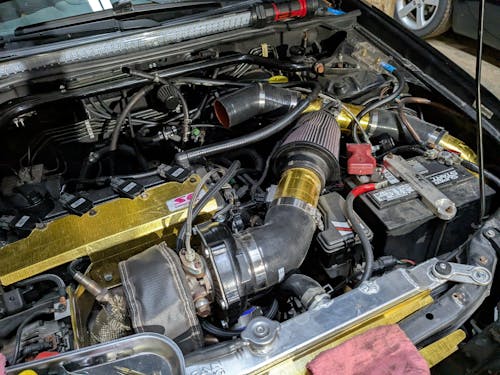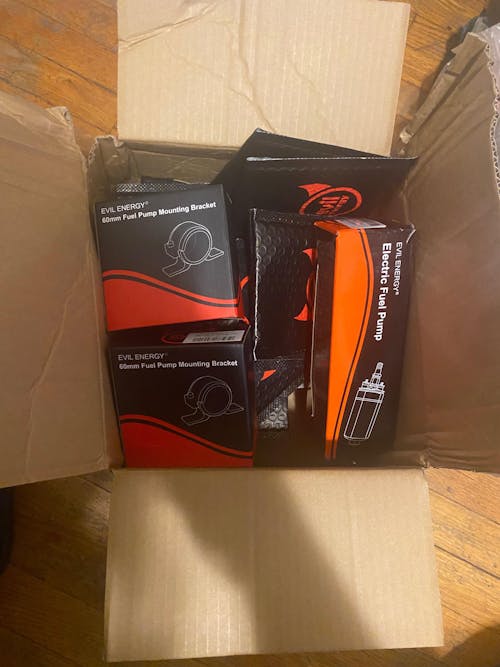MASTERING 6AN FITTINGS: A COMPREHENSIVE GUIDE TO CHOOSING THE RIGHT FUEL HOSE ENDS FOR YOUR VEHICLE BY EVIL ENERGY
MASTERING 6AN FITTINGS: A COMPREHENSIVE GUIDE TO CHOOSING THE RIGHT FUEL HOSE ENDS FOR YOUR VEHICLE BY EVIL ENERGY
When it comes to vehicle engine safety and overall performance, choosing the right fuel might be the first priority. The vehicle performance can be further enhanced by choosing and installing the right fuel hose ends. You may have heard of 6AN fittings at spare parts automotive shops but may be unsure about its installation. In this comprehensive guide, you’ll know every essential detail about AN Fittings and how it can work for you.
6AN Fittings: What is it, and How Does it Work?

AN fittings (Army-Navy fittings) are specialized fitting systems used to connect either flexible or non-flexible hoses. They are designed for various thread sizes, normally ranging from -4 AN to -24 AN, with the type of flare fitting that uses 37-degree flared tubing to make a metal-to-metal seal. It is necessary not to join an AN fitting to a different flare-type fitting because it will result in leakage. However, an appropriate adaptor can be required to couple an AN fitting to another type.
These fittings are made of durable materials like aluminum, stainless steel, or brass, providing a secure, leak-free connection that seals hoses better than any traditional hose clamps. They provide a reliable seal due to their precise threading and compatibility with various fuel types, making them a reliable choice for automotive enthusiasts.
Instructions for Choosing the Right Fuel Hose Ends
When choosing the right fuel hose end, some key points should be kept in mind. Let's see them in detail:
Size of Hose: Size is the most important factor when choosing, as hoses come in various sizes. Consult the vehicle's professional to determine the exact hose size for your vehicle.
Material of Hose: Fuel hoses are typically made of different materials like rubber, synthetic rubber, or nylon. Every material has its own specification. Try to look for those that suit your needs.
Fuel Compatibility: Different fuels may need specific hose materials to withstand them. Suppose you use ethanol-blended fuels and not a specialized hose that can face corrosion; it will waste money and effort.
Installation and Maintenance: Look for hoses that have clear instructions and are easy to use and maintain.
How to Replace a Fuel Hose by Using 6AN Fittings?

These are the steps to ensure secure fitting by replacing a fuel hose:
⦁ First of all, measure the braided hose you need and then cut it to the desired length using a tubing cutter or a hacksaw. Make sure to wrap its end at the cutting point with electrical tape; this prevents frayed ends and straight and clean cuts.
⦁ Gently cut the hose with a cutting tool. You'll get a clean cut. Otherwise, varying degrees of flayed ends can be formed, which can make cuts. To prevent it, a Koul Tool can help. It is commonly used for multiple lengths of hoses.
⦁ Now, put the AN Hose end in the Koul Tool and close it securely with the help of a spacer.
⦁ It's time to place the Koul Tool, have the AN Hose end in your vice, and close it tightly. Make sure that you don't over-tighten it since the Koul Tool is made of plastic and can be easily cracked.
⦁ Now, insert the braided hose through the tapered end of the Koul Tool by rotating and pushing.
⦁ After passing the threaded end of the AN fitting, the hose must come to a complete stop at the inner lip. Now that you've removed the Koul Tool, you can safely use the braided hose with AN fitting without worrying about ripping it.
⦁ Check for leaks by running fuel through the hose and fittings. If you find any leaks, tighten the fitting or replace it.
How Often Should Fuel Hose Ends Need Replacement?
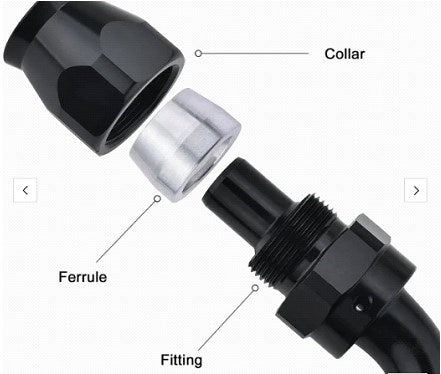
Fuel Hose ends replacement will take some time and patience. Normally, it is recommended to replace the fuel filter every 30,000 miles (48280.32 km) to 40,000 miles (64373.76 km) or according to the vehicle manual or a professional mechanic. However, one can maintain a proper fuel system with a proper replacement schedule.
Fuel Line Connection Optimization Using 6AN Fittings
The fuel system performance of a vehicle is highly dependent on the smooth incorporation of 6AN fittings into fuel line connections. These fittings make it easy to connect and route fuel lines precisely, so fuel flows continuously without interrupting the engine, enhancing the vehicle's fuel economy.
With their standardized sizing, fuel hoses and lines may be easily used, allowing both amateurs and professionals to optimize fuel delivery configurations with precision. The 6AN fitting is a dependable way to keep fuel flowing efficiently in any vehicle, whether a racing vehicle, a high-performance street car, or an industrial use.
Bottom Line: The Foundation of Efficient Fuel System Design
AN fittings are the most reliable and precisely engineered components for optimizing fuel systems. Whether racing at high speeds or just trying to get the most out of your daily driving, their importance in ensuring reliable and efficient fuel flow is undeniable. So, grab yourself one and enjoy a fuel-efficient system without any hassle.
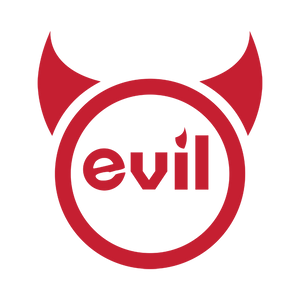

![[20FT] EVIL ENERGY PTFE Fuel Line Kit, complete black hose & fittings set, 180-day return](http://www.ievilenergy.com/cdn/shop/files/Test-2025-Evilenergy-125598065_165x.png?v=1742144807)
![[16FT] EVIL ENERGY PTFE Fuel Line Kit, black braided hose, fittings, free shipping & return](http://www.ievilenergy.com/cdn/shop/files/Test-2025-Evilenergy-125598171_165x.png?v=1742144807)
![CPE Fuel Line[25FT]](http://www.ievilenergy.com/cdn/shop/files/25FTCPE_FuelLine_165x.png?v=1735220649)
![CPE Fuel Line[20FT]](http://www.ievilenergy.com/cdn/shop/files/20FTCPE_FuelLine_165x.png?v=1735220649)
